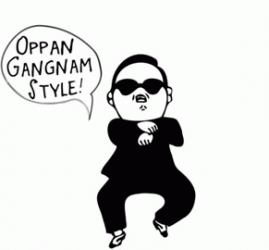2) Consider the role of television (as compared to other media devices) in your daily consumption and perception of popular culture, in comparison to that of the presence of television and its implications on the direction of contemporary popular culture in South Korea as suggested by Kim Suk-young in chapter 2.
In chapter two of her book, Kim Suk-young writes about the role that TV has played in the presentation of media. Initially, TV was envisioned as a media platform which could deliver a theatre like performance in the comfort of one’s home. As one might expect, cable TV at the time it was introduced was extremely popular, and continued to grow during the late 80’s into the 90’s with the introduction of colored broadcasts.
At the time of their inception, there were three major broadcasting companies in Korea which each had their own tv music chart programs. These programs focused not only on the music, but the visuals as well, allowing for fans to put both the image and voices of their favorite artists together. In Western culture, this can be likened to MTV, and the music billboard. A stark difference however, is that in Korea these TV broadcasters today, still retain some control over the music industry despite the vast new ways to consume media.
That is to say, we no longer need to watch TV to get the experience of watching our favorite music videos, or figure out who the most popular artists currently are. Instead, we have the availability of programs such as Vevo, Youtube or any other website online that allows us to stream uploaded content. Instead of listening to music that is “popular”, clever software built into applications such as Apple Music and Spotify look at our preferences and personalize a list of recommendations. Such advances in the distribution of music media would lead one to question how the same TV producers in Korea still retain a lot of power.
As explained in Kim’s book, music producers still try and kowtow to the individuals in charge of the selection of which artists will be put on TV broadcasts. Despite all the other media outlets available today, these TV broadcasts still remain essential to the k-pop industry. This is explained by circumstances within the k-pop industry; the star system used by entertainment companies, and the “manufactured nature of popularity by various media forces”. A balance exists now, where entertainment companies allow their biggest starts to perform on TV shows, in exchange for the same TV broadcaster to present some of their lesser known performers.
Even though these shows do not draw in massive audiences, the time and effort (usually 24 hours goes into putting together a 5 minute video) is worthwhile because this content is usually pushed to other online platforms which would generate more views.
It is interesting to imagine that TV broadcasts would remain important in Korea, but have for the most part gone extinct in Western entertainment culture. I can’t remember the last time I saw a music video on the TV. It seems to me that in the k-pop industry, most of the control over the production of music remains in the hands of the media and production companies, and less so that of the artists, especially when compared to the Western frame work.
Kim, Suk-Young. K-pop Live: Fans, Idols, and Multimedia Performance. Stanford, CA: Stanford University Press, 2018. Kindle.

